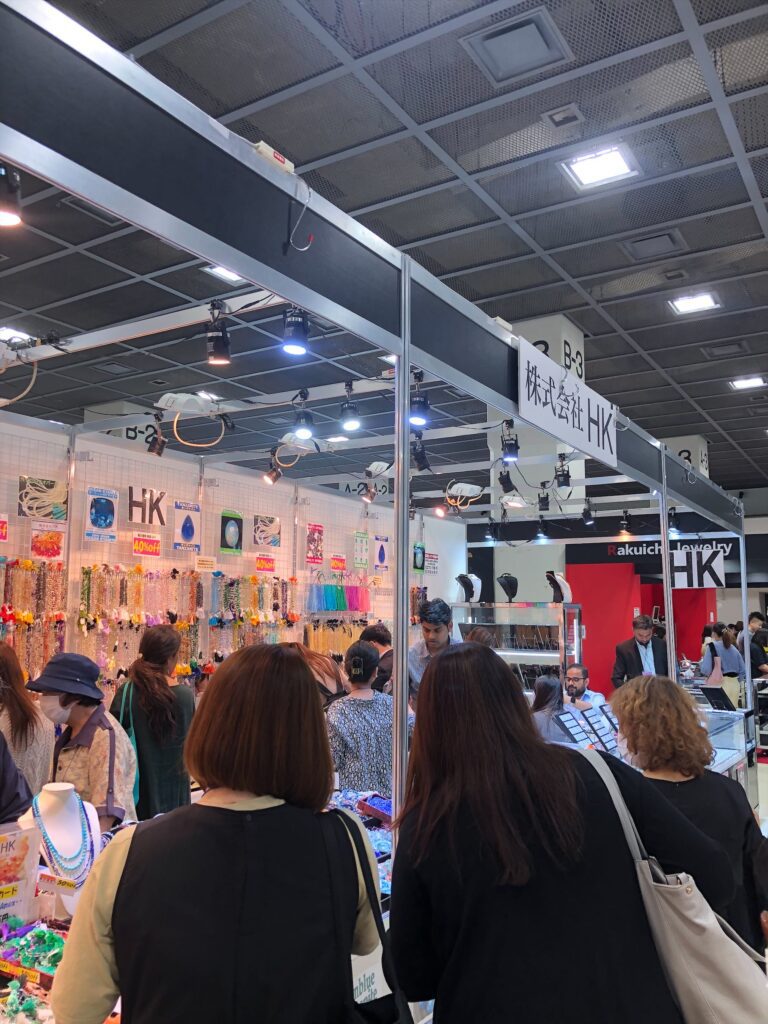


I often hear the question, “Why do Japanese jewelry findings companies continue to produce hardware with designs that haven’t changed in decades?” Many of them attribute it to being conservative and having rigid corporate cultures. These companies are relatively large in scale and need to sell their products in large quantities. To achieve mass sales, they must appeal to a wide range of people. This often means that unconventional designs are less accepted, and conservative designs are maintained. This is what I have heard from a few companies, and I believe there are many exceptions to this as well. In fact, even in the hardware components of the products I sell, there are very few designs that are aesthetically appealing. One of my selling points is the All-knot technique, which is somewhat traditional in nature, so I can’t criticize others too much. However, I want to emphasize that using colored threads for the All-knot technique is not commonly seen, and it’s a unique aspect of my products.
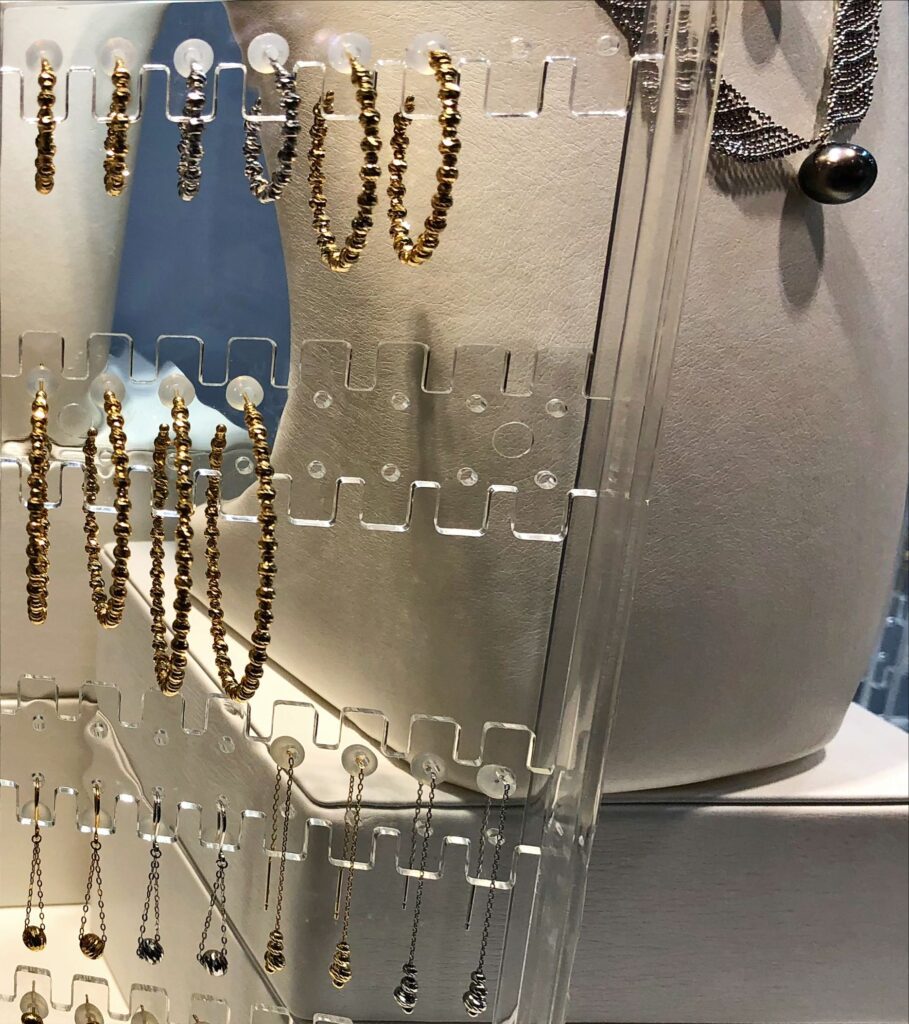
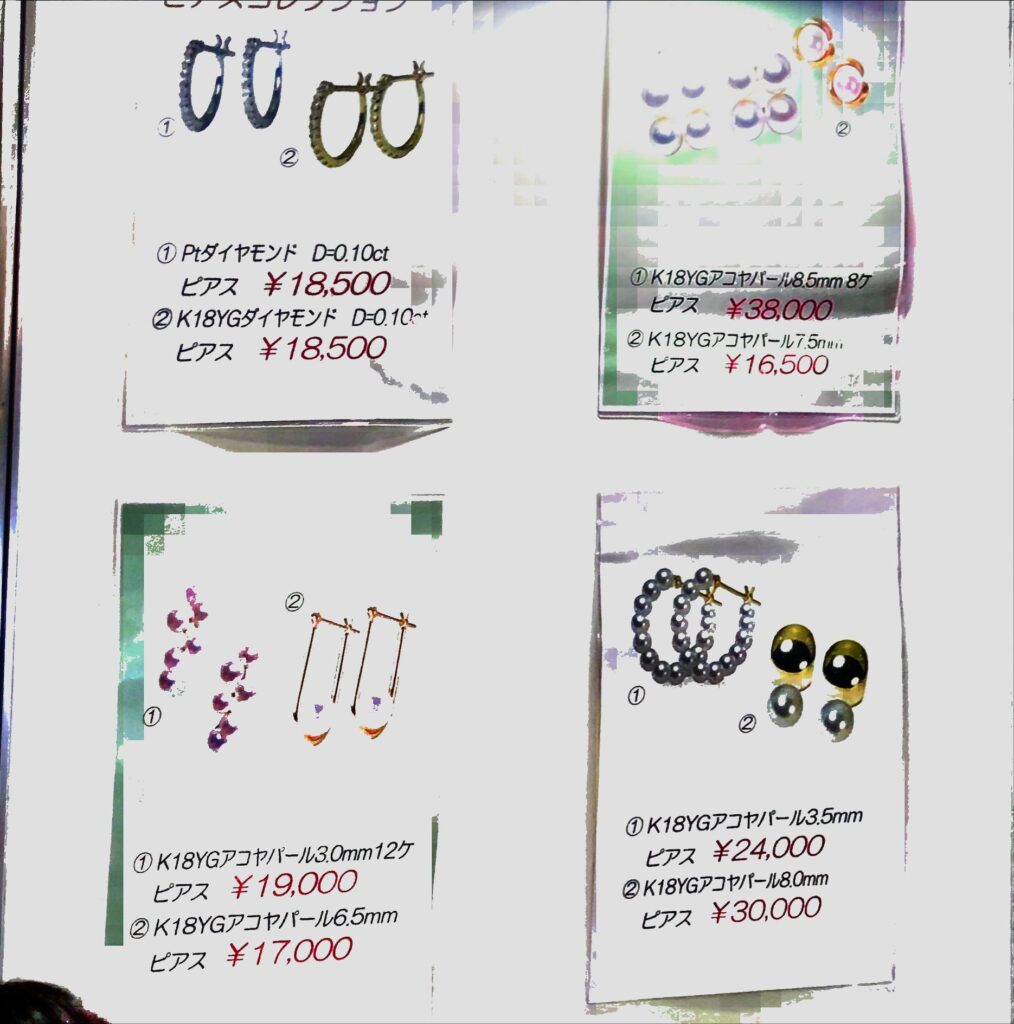
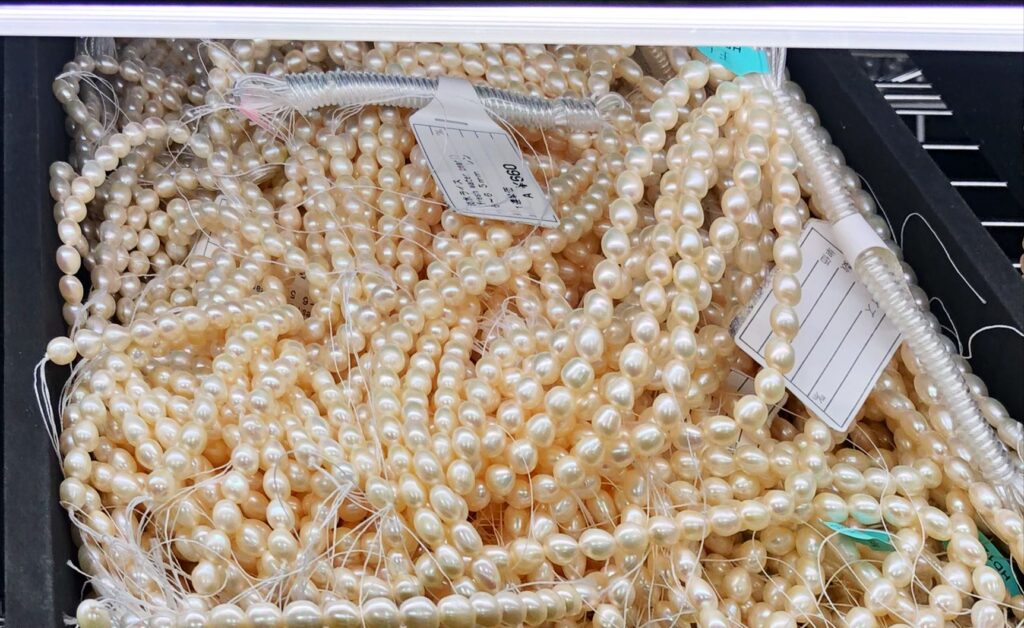
There was another purpose for my visit to this jewelry exhibition. It was to assess the current market prices of pearls in light of the soaring prices this season. I examined pearls from several pearl companies, evaluating the prices of each individual pearl. Once I determined the value, I checked the price tags or asked the staff for the prices. I repeated this process multiple times. As expected, the market prices were nearly double compared to last year. Akoya pearls are harvested every year from December to January. They are then transformed into necklaces around the summer, approximately six months later. Therefore, the Akoya pearls at this jewelry exhibition were harvested between December 2021 and January 2022, before the price surge. The profit margin for these pearls is significantly higher. However, the real challenge for these companies will come after this summer when they start selling pearls harvested from December 2022 to January 2023, during this period of high market prices. As the profit margin decreases, it becomes crucial to accumulate strength beforehand. Some Akoya pearl companies solely operate in wholesale, facing great difficulty due to their purchasing prices being higher than their selling prices. On the other hand, companies that have focused on both wholesale and retail seem to be gaining momentum. While it’s possible for companies to expand their sales solely through wholesale efforts, it’s often the companies that strive for daily progress and embrace challenges that experience significant growth in various fields.
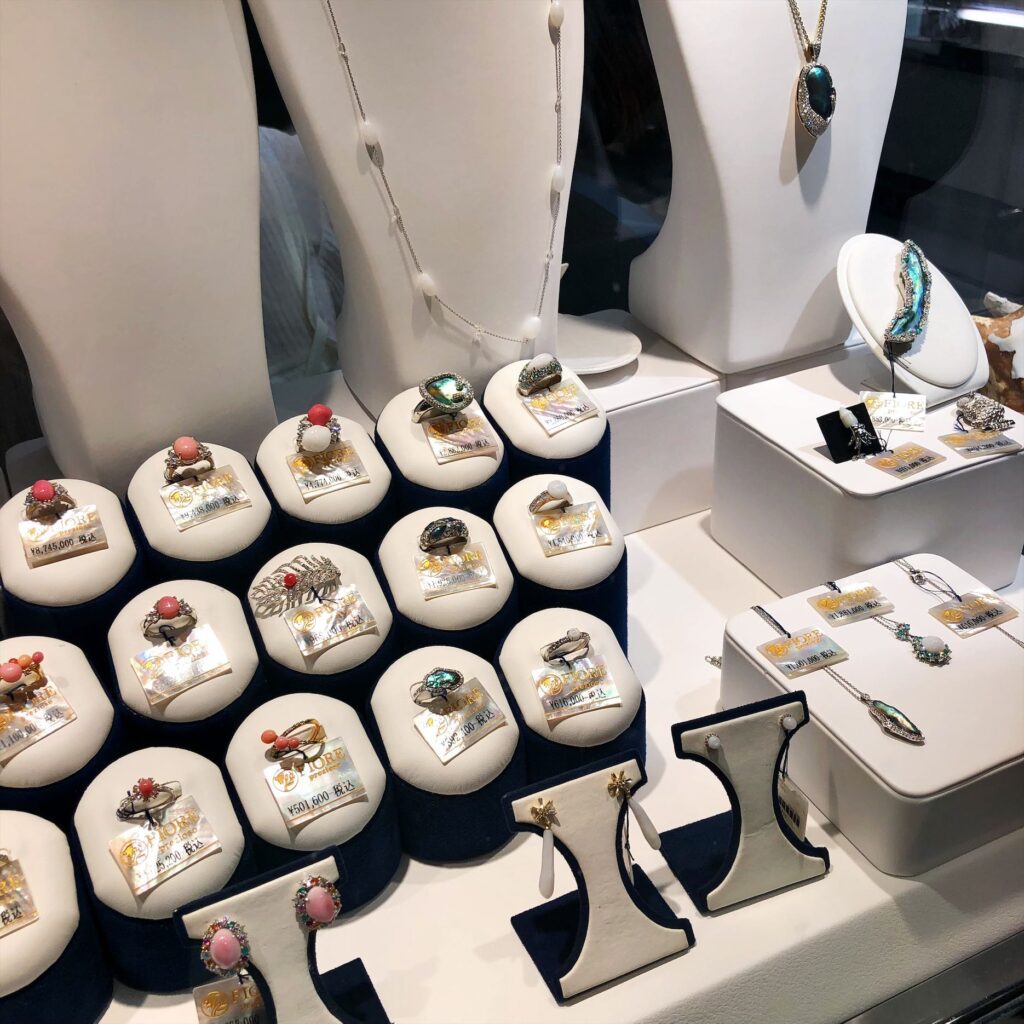
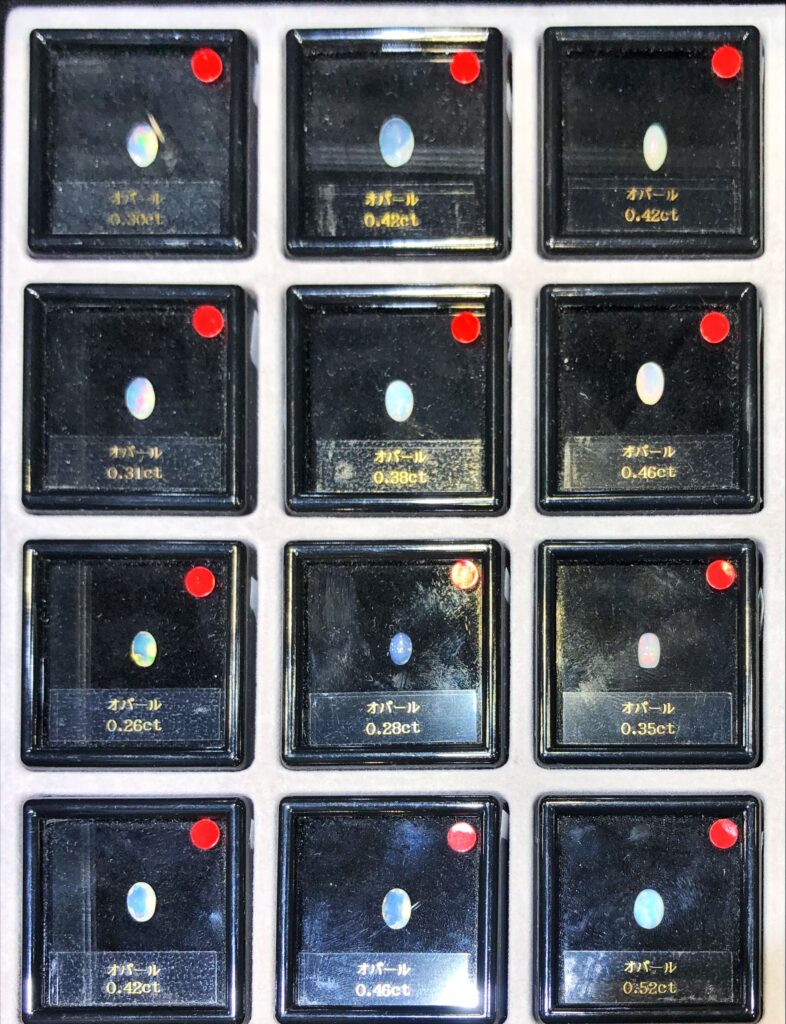
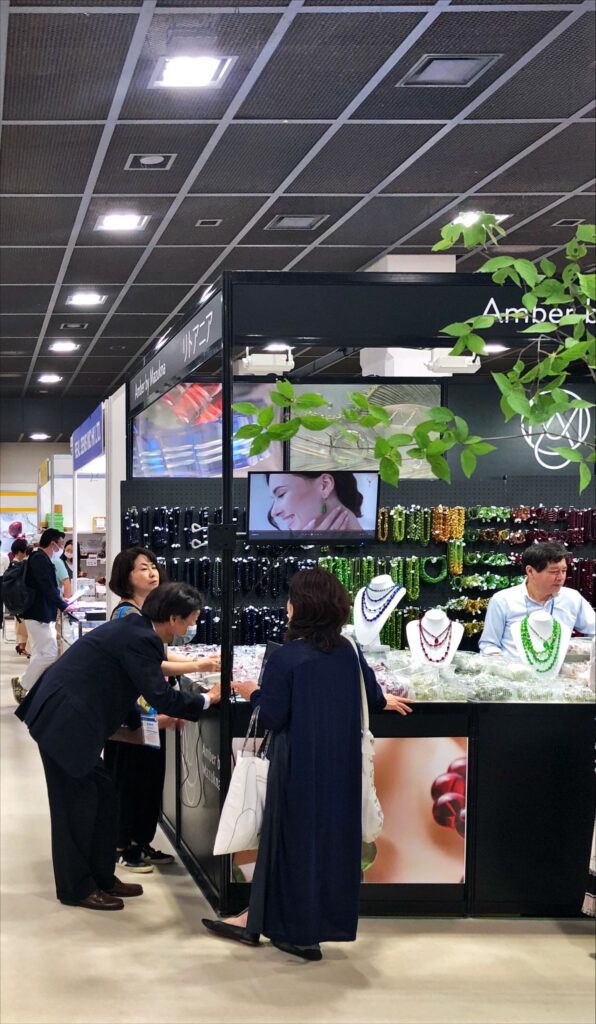
It is natural for the prices of Akoya pearls to increase due to the soaring market demand. However, even poor-quality pearls, such as those with cracks, are being sold at relatively high prices due to the price surge. Previously, such pearls would have had little to no value, but as the market prices increased and the supply of pearls decreased, these low-quality pearls started to appear more frequently. Additionally, particularly in the Chinese market, the importance of certification documents has been excessively emphasized. This has led to the circulation of pearls labeled as “Koshi-mono,” which means they are two-year-old pearls. Akoya pearls come in one-year and two-year varieties, with the latter believed to have better quality due to the longer cultivation period. While it is generally accepted as a common opinion among pearl cultivators, there are doubts when it comes to individually assessing pearls. It is not uncommon for one-year pearls to have a thicker nacre layer than two-year pearls. The crucial question is whether it is appropriate to simply judge pearls as “Koshi-mono” based solely on the thickness of the nacre layer and indicate it on the certification document. As pearl cultivators, we keep records of whether each pearl is one-year or two-year, but for general pearl companies that source pearls from multiple cultivators and mix them during processing, it is impossible to determine whether a necklace contains one-year or two-year pearls. Judging based on the thickness of the nacre layer and assuming it to be a two-year pearl may not be a significant mistake. However, the consumers who eventually purchase the necklace are unaware of such information. They will simply believe that “Koshi-mono,” the two-year pearls, are superior. When this becomes a common practice, the passing criteria for the “Koshi-mono” designation stated on the certification issued by appraisal organizations will be lowered. Over time, the passing criteria for the prestigious designations mentioned in the certification have been lowered in the pursuit of “selling as many as possible.” As a result, even pearls of inferior quality can deceive consumers into thinking they are of high quality. On the other hand, major pearl retailers and wholesalers have a preference for one-year pearls rather than two-year pearls from cultivators. Two-year pearls tend to have a thicker nacre layer, which increases the likelihood of them being baroque pearls. Furthermore, a thicker nacre layer makes processing steps such as dyeing and bleaching more challenging for most pearls. On the other hand, one-year pearls, or those harvested in the current year, tend to have a slightly thinner nacre layer, resulting in a higher occurrence of round pearls and making processing easier due to the thinner nacre layer. Additionally, most general consumers have limited knowledge or information about the thickness of the nacre layer. Retailers can easily appeal to consumers by highlighting the qualities of round pearls without blemishes.
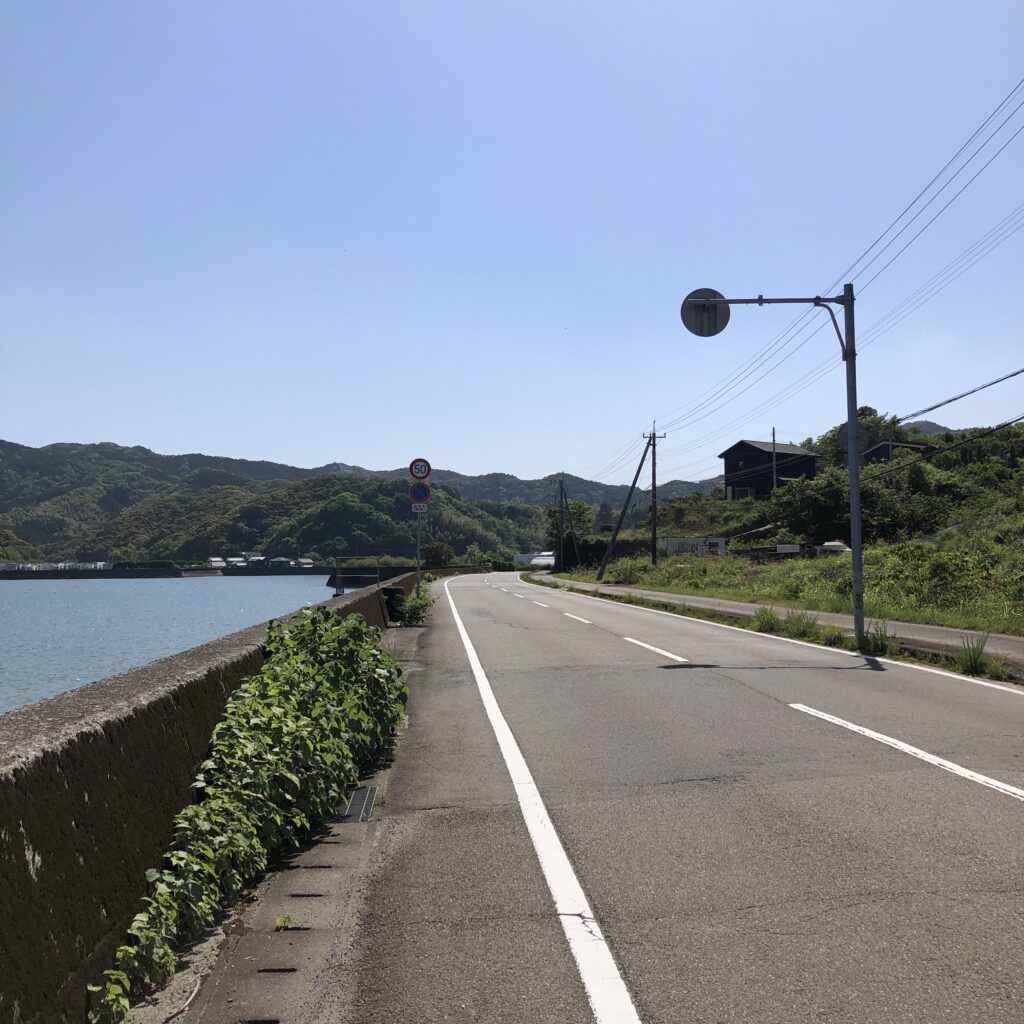
As a member of a pearl cultivation company, I cannot agree with private appraisal companies determining whether a pearl is one-year or two-year based solely on the thickness of the nacre layer. I can understand their intentions and objectives, but pearls are created by living creatures called Akoya oysters. A healthy Akoya oyster can produce a thick nacre layer even in a short cultivation period, while a tired oyster may only produce a thin nacre layer even in a two-year cultivation period. It reminds me of labeling someone as “responsible” because they are the oldest sibling or as “spoiled” because they are the youngest. It is true that, generally speaking, the oldest sibling tends to be more responsible. In fact, I am a second-born and have a free-spirited and independent personality that aligns more with the general characteristics of a second-born. However, when it comes to assessing them individually, I hope they can be judged based on their own merits, rather than labeling them. I’m not sure what point I’m trying to make here. It seems like I’m rambling. The appraisal companies are not necessarily doing anything wrong, and I understand their actions. However, I feel sorry for pearls being labeled arbitrarily by humans. Of course, I wouldn’t say such things in the workplace; I might be told, “You’re being childish.” I’m just satisfied that you are willing to listen. In the end, there was very little discussion about the Kobe International Jewelry Exhibition. These were just unconscious thoughts that crossed my mind as I walked through the venue.
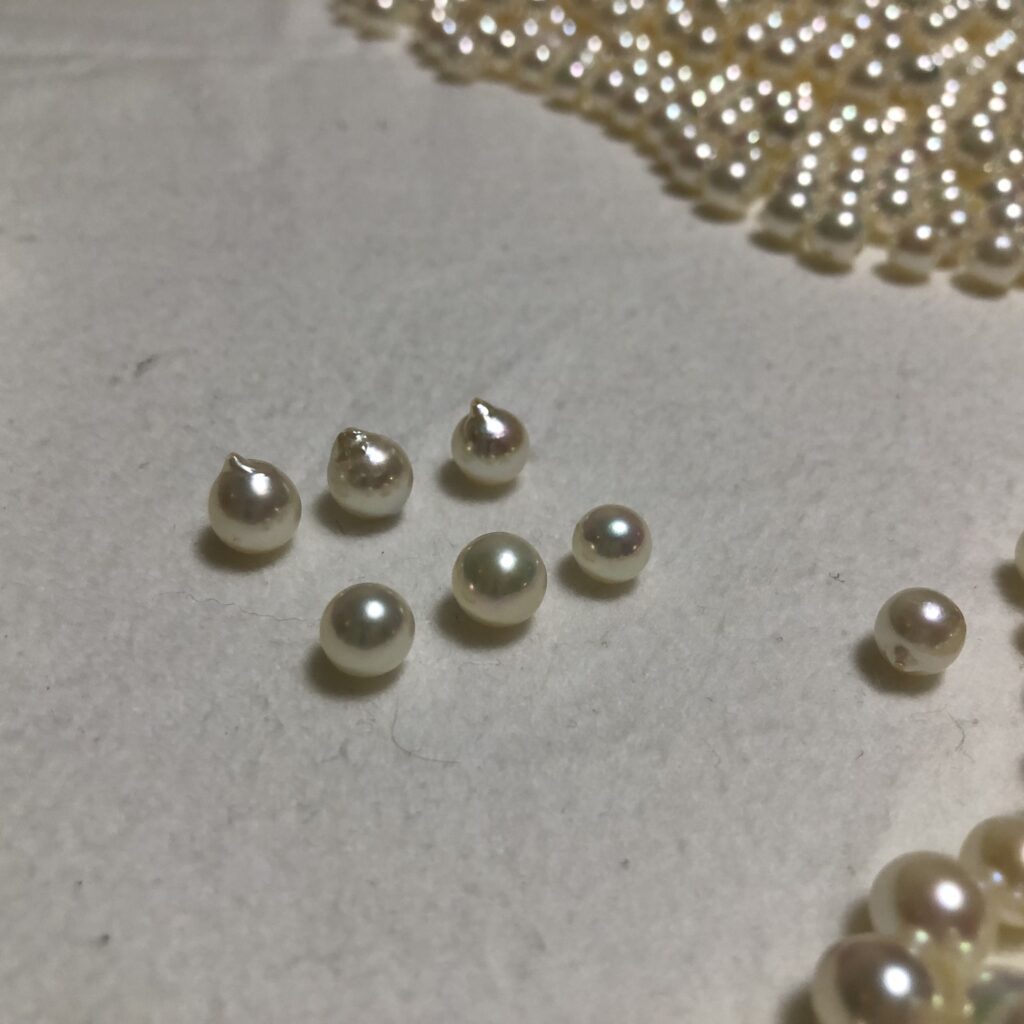
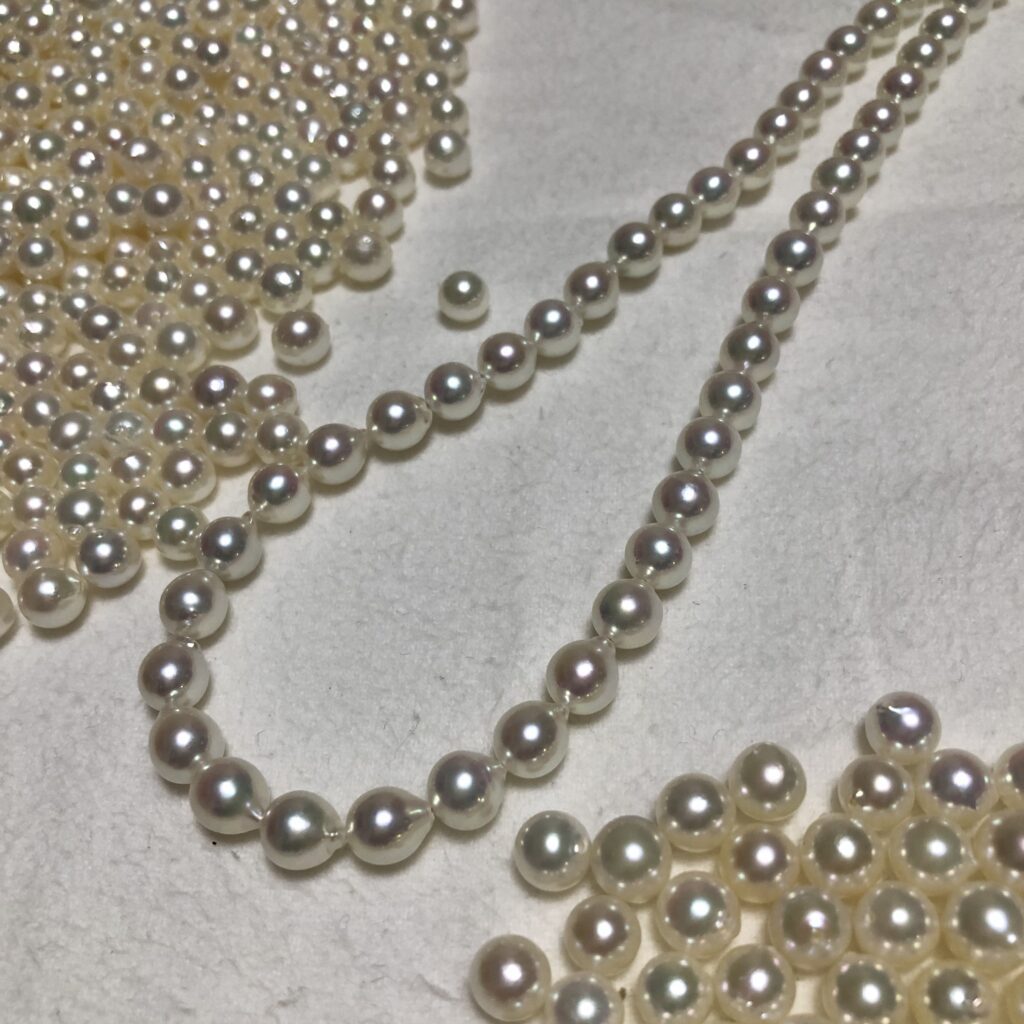
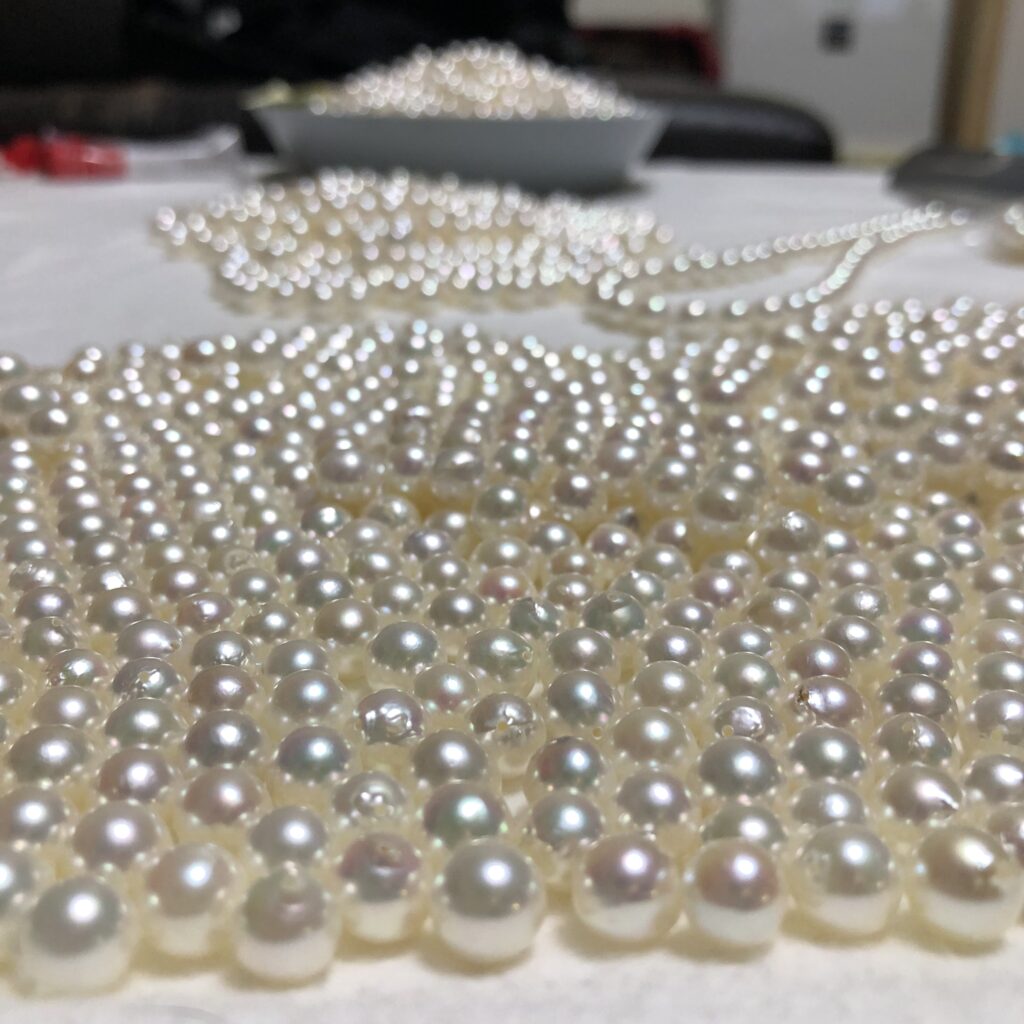
Lately, I’ve been sorting through a large quantity of pearls and gradually creating necklaces. I gather 4 to 50 pearls with different characteristics and combine them into a single necklace. I need to make sure the necklace becomes a harmonious group where everyone gets along and avoids conflicts. It feels like the pearls are telling me, “Sort us properly!” That’s the kind of mood I’m in.
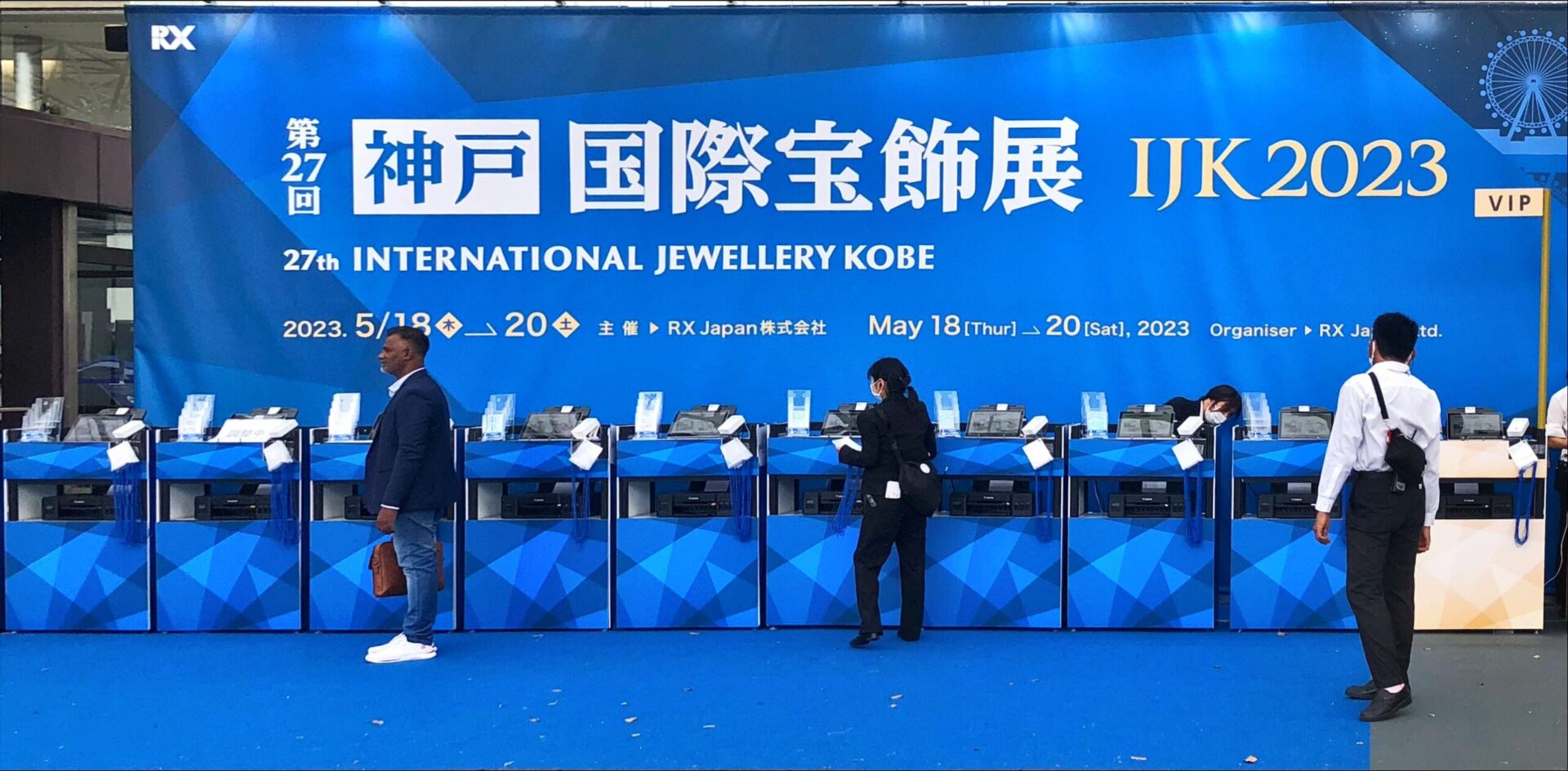
Comment